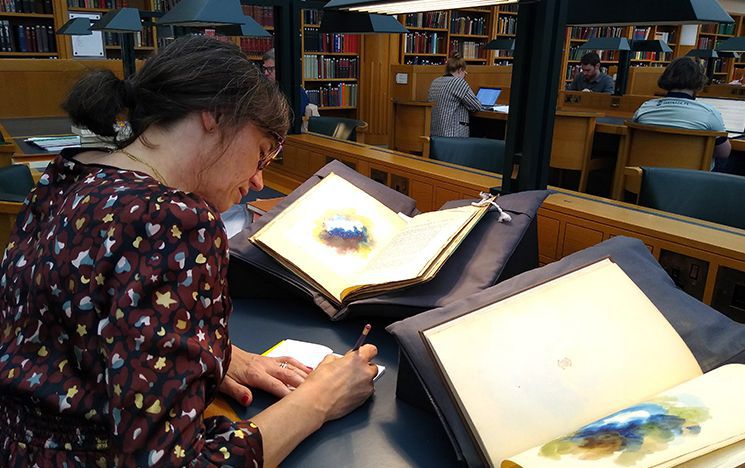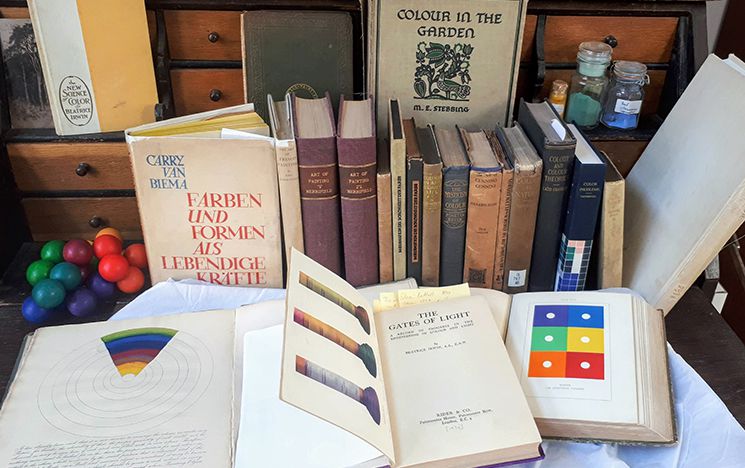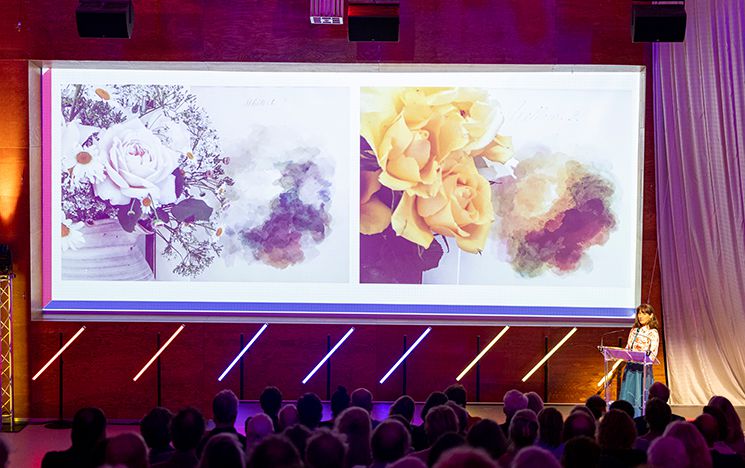Lives in Colour
Led by art historian Dr Alexandra Loske, this project aims to gather information about the lives and work of women who wrote about, engaged with and taught colour, from the eighteenth century onward.

Image credit: Steve Pavey
About the project
The aim of this project is to create a list of women in colour history, record their work, and establish how each one was able to engage with a subject traditionally associated with men (some referred to as 'colourmen'). The project is led by Dr Alexandra Loske, an art historian, curator, oral historian and Associate Director of the Centre for Life History and Life Writing Research, and supported by Zeynep Sagir, colour consultant and Founder & Creative director of The Colour Club. Together, they have collaborated on several colour projects, including a podcast for a large cultural institution in the UK on the subject of women writers on colour, which will be released in 2026.
The women redefining colour writing
Examples of women writing and publishing on colour before the twentieth century are extremely rare. In his comprehensive bibliography ‘Books on Colour 1495-2025’, Roy Osborne estimates that in the nineteenth-century approximately 430 original books on colour were published in Europe, Asia and the Americas, compared to an estimated 1,500 in the twentieth century. Of the nineteenth-century publications, fewer than twenty were authored by women (although we can cautiously add a few more of anonymous authorship, and publications that have never been recorded or don’t survive).
Few women wrote about colour specifically. Instead they considered colour in certain contexts, frequently botany or flower painting, the latter considered a ‘polite art’ and thus suitable for ladies. Among these are Anne Pratt (1806-1893) and Elizabeth Twining (1805-1889).
The first woman who can be identified in colour history as an author of published treatises on colour is the English flower painter Miss Gartside. Very little is known about her life, but she taught watercolour painting to ladies and exhibited botanical drawings at the Royal Academy in 1781 and at other London venues until 1808. In 2024, Loske published the first monograph on Gartside – ‘Mary Gartside c.1755-1819: Abstract Visions Of Colour’ (London: Paul Holberton/Thomas Heneage Art Books). Loske has also written the ODNB entry for Gartside.
In the last two decades of the nineteenth century there was a surge in practical handbooks and textbooks on colour, as well as an interesting example of literary criticism by the US American writer Alice Edwards Pratt (1860-1902). Her PhD thesis on The Use of Color in the Verse of the English Romantic Poets (1898) can cautiously be regarded as the beginning of the inclusion of women into the scholarly canon of colour literature. Other, less academic works often concern the familiar subjects long associated with the female sphere, such as fashion, flowers, home decoration and school primers. This remains a tendency in the twentieth century, but the dramatic rise in publications generally also provided opportunities for experimental writing.
Project highlights
Memories in Landscape: Finding Miss Gartside
In July 2025 Alexandra Loske spent a week in Shropshire in search of Mary Gartside's grave and her last address in Ludlow. Seeing the area where she spent her last years, walking and driving through the countryside around Ludlow, and exploring the place where she died (a coaching inn at Craven Arms, just north of Ludlow), resulted in a deeper understanding of what landscape means, and what kind of memories places hold. Within three days, Loske found her final resting place, in the picturesque setting of Stokesay Castle. Gartside was buried in the graveyard of nearby Church of St John the Baptist on 14 December 1819. Her gravestone does not survive but is recorded in an early 20th century notebook in the Shropshire Archives, where Loske also located her burial record. This led to the unexpected discovery that since approximately the 1970s, her first name had been incorrectly given as Mary (possibly a bibliographical error). Instead, her name was Martha Gartside. Further research, including the location of her will, confirmed this, and revealed details of how and where she lived and worked. Gartside herself never used her full name in any contemporary records, possibly to keep her gender hidden in literature.

The approximate site of Miss Gartside's grave, by Stokesay Castle, Shropshire
Since then, Loske has updated her chapter on Gartside in the Oxford Dictionary of National Biography, written three entries on Gartside for a new edition of The Palgrave Encyclopedia of Romantic-Era Women's Writing (upcoming, 2026), and on 17 September 2025 presented a stand-alone lecture, featuring this new research, for the Regency Society of Brighton and Hove: Georgian Colour - Finding Miss Gartside. She has also been invited to contribute an article on Gartside in a 2026 issue of The Burlington Magazine. She is now working on a compendium of all extant work by Gartside, authored with PhD candidate Lara Lee Meintjes (Berkeley) with the Lever Press, Ann Arbor, MI.
Major colour exhibition at Brighton & Hove Museums in 2025
Alexandra Loske was the curator of COLOUR: A Chromatic Promenade Through the Royal Pavilion (21 March to 19 October 2025), which featured a copy of Gartside's first book. Alexandra also hosted a series of colour events, including Colour Conversations and concerts: COLOUR Events - Brighton & Hove Museums. Read an interview with Alexandra Loske about it in Forbes magazine here. The exhibition coincided with the publication of a major new book on the Royal Pavilion's interiors, authored by Loske and published by Yale University Press: The Royal Pavilion: A Regency Palace of Colour and Sensation (June 2025).
In April 2022, an article about Gartside and Emily Noyes Vanderpoel by Kelly Grovier appeared on the BBC Culture website, for which Alexandra Loske was interviewed – The Women who Redefined Colour.
On 7 October 2024, Alexandra Loske gave the prestigious Mondrian Lecture at the award ceremony of the Sikkens Prize 2024, awarded to the artist Pipilotti Rist at the Kunsthal Rotterdam. Previous speakers include Simon Schama, Umberto Eco, Rem Koolhaas, and Donald Judd. Alexandra Loske was the first woman to deliver the Mondrian Lecture and spoke about pioneering women in colour history.

A display of books by women writing on colour

Alexandra Loske speaking on stage at Mondrian Lecture. Image credit: Anne Reitsma

